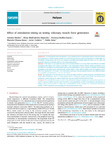Mostrar o rexistro simple do ítem
Effect of Stimulation Timing on Testing Voluntary Muscle Force Generation
| dc.contributor.author | Madrid López, Antonio | |
| dc.contributor.author | Madinabeitia-Mancebo, Elena | |
| dc.contributor.author | Robles-García, Verónica | |
| dc.contributor.author | Chouza-Insua, Marcelo | |
| dc.contributor.author | Cudeiro, Javier | |
| dc.contributor.author | Arias, Pablo | |
| dc.date.accessioned | 2020-10-26T10:52:46Z | |
| dc.date.available | 2020-10-26T10:52:46Z | |
| dc.date.issued | 2020-10-08 | |
| dc.identifier.citation | Madrid A, Madinabeitia-Mancebo E, Robles-García V, Chouza-Insua M, Cudeiro J, Arias P. Effect of stimulation timing on testing voluntary muscle force generation. Heliyon. 2020;6(10):e05179 | es_ES |
| dc.identifier.issn | 2405-8440 | |
| dc.identifier.uri | http://hdl.handle.net/2183/26527 | |
| dc.description.abstract | [Abstract] Background. The interpolated twitch technique (ITT) is a ubiquitous test for assessing the level of voluntary muscle force generation, in which muscle twitches are evoked via percutaneous electrical stimulation. Traditionally, the stimulation timing during the ITT is not computer-controlled and usually delivered from 5 to 10 s after the maximal voluntary contraction (MVC) of the potentiated muscle. Methods. In this work, we evaluated the sizes of the evoked twitches in the lower limb with different controlled stimulation time delays with respect to the MVC of the ankle plantar flexors. Fifteen healthy participants were included. We recorded the un-potentiated muscle twitch amplitudes at rest in response to doublet supramaximal stimulation of the tibial nerve, superimposed twitches (SITs) at three different delays from the beginning of the MVC force plateau (0.1, 0.75, and 1.5 s), and resting twitches in the potentiated muscle at four different delays once the MVC was finished (0.1, 2.5, 5.0, and 10.0 s). Results. The magnitude of the SITs did not vary among the delays tested but varied among the potentiated resting twitch (PRT) amplitudes, with 2.5 s being largest and 0.1 s being the smallest. Remarkably, the resting twitch amplitudes reduced during the session despite the long rest periods between MVCs (5 min). Conclusion. We conclude that proper control of the stimulation timing is mandatory to increase the sensitivity of the ITT, and a 2.5 s delay from the end of the MVC is recommended for the PRT. Controlling the development of fatigue, which can be intrinsic to testing with repeated MVCs, is also essential. We recommend reducing the number of MVC repetitions and increasing the rest periods between them. | es_ES |
| dc.description.sponsorship | Pablo Arias was supported by Ministerio de Economía, Industria y Competitividad, Gobierno de España (MINECO Grant 2017: DEP2017-87601-R). Elena Madinabeitia-Mancebo was supported by Xunta de Galicia [Regional Government], Spain (PREDOC grant). | |
| dc.description.sponsorship | info:eu-repo/grantAgreement/AEI/Programa Estatal de I+D+i Orientada a los Retos de la Sociedad/DEP2017-87601-R/ES/ENTRENAMIENTO DE LA MARCHA COMBINADO CON ESTIMULACION CEREBRAL NO INVASIVA PARA REDUCIR LA FATIGA Y EL RIESGO DE CAIDAS EN MAYORES | |
| dc.language.iso | eng | es_ES |
| dc.publisher | Elsevier | es_ES |
| dc.relation.uri | https://doi.org/10.1016/j.heliyon.2020.e05179 | es_ES |
| dc.rights | Creative Commons Attribution-NonCommercial-NoDerivs 4.0 International Licence (CC-BY-NC-ND 4.0) | es_ES |
| dc.rights.uri | http://creativecommons.org/licenses/by-nc-nd/4.0/ | * |
| dc.subject | Muscle force | es_ES |
| dc.subject | Muscle fatigue | es_ES |
| dc.subject | Interpolation twitch technique | es_ES |
| dc.subject | Behavioral neuroscience | es_ES |
| dc.subject | Cognitive neuroscience | es_ES |
| dc.subject | Systems neuroscience | es_ES |
| dc.subject | Muscle | es_ES |
| dc.subject | Biomechanics | es_ES |
| dc.subject | Physiology | es_ES |
| dc.title | Effect of Stimulation Timing on Testing Voluntary Muscle Force Generation | es_ES |
| dc.type | info:eu-repo/semantics/article | es_ES |
| dc.rights.access | info:eu-repo/semantics/openAccess | es_ES |
| UDC.journalTitle | Heliyon | es_ES |
| UDC.volume | 6 | es_ES |
| UDC.issue | 10 | es_ES |
| UDC.startPage | e05179 | es_ES |
Ficheiros no ítem
Este ítem aparece na(s) seguinte(s) colección(s)
-
GI-NEURO - Artigos [165]
-
INIBIC-NEURO - Artigos [48]






